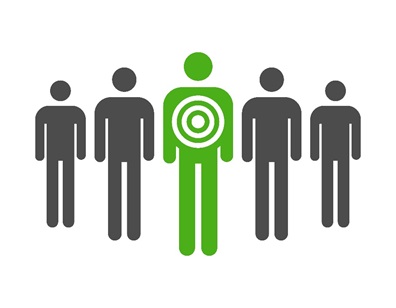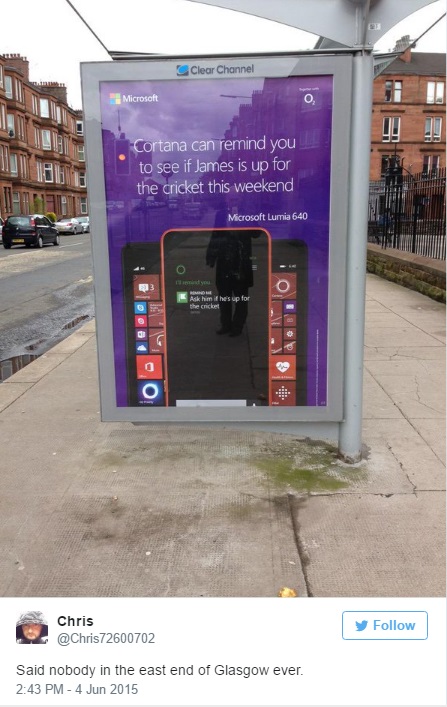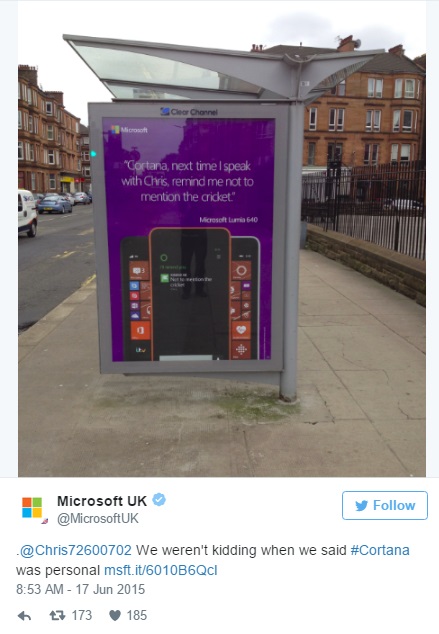From retargeting to location-based marketing, personalisation in advertising is becoming ever-more sophisticated. Elena Lockett, marketing assistant at FM Outsource looks at four different personalised targeting methods, with advice on how to get the most of your customer data.
Unless you rarely go on social media, you’ve probably seen a personalised advert. It’s one of the newest marketing trends around, but this one is far from being a throw-away gimmick. More and more businesses are becoming interested in personalising their advertising and getting to know you better, through learning about how you interact with a website and your own personal preferences. You might have even seen these being used in emails as merge tags to insert personal details to pre-set layouts.
Personalisation in advertising is much more than what browser and device you use. It tends to revolve around personal information companies have gained from you, from name and age to browsing and purchasing behaviour. This could be information you have willingly provided. For example: when you made an account or filled in a survey for a discount code. But companies can also learn from your usage and buying history on their site, without you having to do anything different from your normal browsing activity. But what do they do with this information once they’ve got it?
There are a few things that can happen:
Retargeting
Many online shopping websites utilise the information they gain by tracking your usage on their site and then use this to advertise to you even after you’ve left the website. Say, for instance, you’re browsing for summer dresses on ASOS and shortly after, you exit the website. More than likely as you’re perusing other domains, in their advertising feeds you will start to see content you were just looking at! You can either put this down to ASOS’s advertising being incredibly similar to clothes you yourself wanted to purchase or personalised advertising. These are called custom ads, created using a whole slew of information from search, purchase and profile data.

When you literally can’t get away from a product you previously looked at, the chances of you purchasing increase. Did you know that 26% of shopping cart abandoners will return to purchase when retargeted? Advertising using data like this can have its downfalls though, especially if you were planning a surprise purchase. This item could then re-appear when the person – perhaps your partner – is using the browser and they’ll know exactly what you’ve been looking for.
Out-of-home Advertising
Real time data is helping adapt the traditional methods of advertising too. Now billboard, bus stops and poster locations don’t just feature a simple printed message, they feature sophisticated, highly-targeted and relevant campaigns using data and digital signage in larger cities.
Microsoft’s Cortana used out-of-home advertising to bring its product’s features to life, running ads that showed various Cortana messages on screens that changed dynamically dependent on the time of the week, the weather and many other variants. At one time, they had 10,000 scrolling variations across 875 digital screens in the UK.
Even when someone criticized one of their posters, by tweeting “Said nobody in the east end of Glasgow ever” regarding this ad, Cortana used this to their advantage:

This quickly went viral, but within 24 hours, they had tracked down the poster in question and remotely replaced it with a response to his tweet:

This was a prime example of how personalisation can work in advertising, with the added introduction of the human touch to help make a significant impact. As it went viral, this advertising campaign reached many more people than previously thought and was a chance to truly prove how personal Cortana is.
Personalised Social Media Advertising
Your social media account is a treasure trove of data. Facebook, for example, knows an awful lot about its users. It can show ads to people based on the information they actively provide on their accounts or from their activity across both web and mobile.
If you’re listed as ‘single’, you might see advertisements to dating websites or you could be promoted engagement rings when listed in a relationship for a number of years.

Not only can Facebook use the information you provide for advertising purposes, they can also allow ads in stream to be personalised by including additional detail about friends of yours that have engaged with a brand or product on Facebook.
These are commonly known as ‘shared endorsements’ and usually occur as ads stating ‘Your friend, John, liked this page.’ This is a powerful tool to increase click through, as we are can be influenced to engage if a friend shows interest in a product.
Customer Audience Targeting
Another great way of personalised advertising is using Custom Audience Targeting. This is a way to target your customers with Facebook ads, whether they’ve liked your page or not. Using either an email address or other offline data you’ve gathered through your business about your existing customers you can even focus on specific visitors to your website using Website Custom Audiences, so re-targeting to those who’ve viewed a particular page or section of your site.
This harnesses great power, meaning you can promote similar products to ones your customers have previously viewed. Or you can even use a list of dis-engaged email users who don’t read your emails anymore, and connect with them on Facebook instead. So rather than letting potential customers disappear into the distance as email isn’t their thing, you can market on another channel.

Although personalised advertising can look very attractive from the outside, there are things to watch out for such as avoiding making all your advertising personally tailored and directed at an individual customer. This is to avoid anyone feeling uncomfortable with the amount of data your company can actually obtain on them. The costs to implement personalised advertising also tend to be on the higher side, putting many businesses off introducing them. But investing the time and money into advertising like this can be well worth the cost, especially if you take your time when approaching it.
Tempted to dip your toe in? Make subtle changes to advertisements to target them towards different age groups so your audience will barely notice the difference. If you change the way you approach advertising from non-personal to incredibly personalised in just one day, you might be left with some confused and unhappy customers. Whether it’s creating a range of billboard ads to suit the location and timing of your campaign or utilizing the information your customers willingly provide, there are a range of ways to make personalised advertising work for each and every business.
By Elena Lockett
Marketing assistant
FM Outsource

